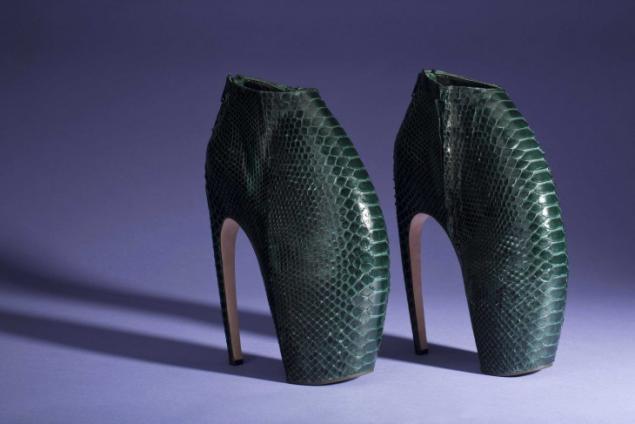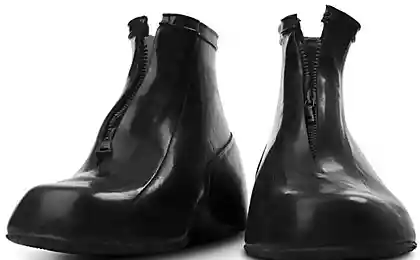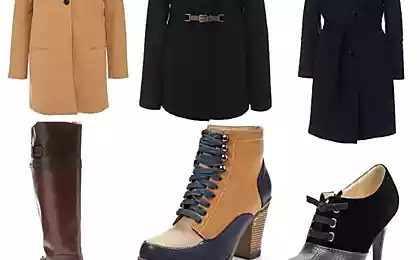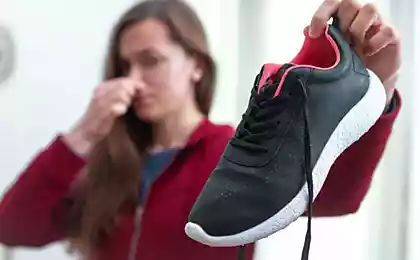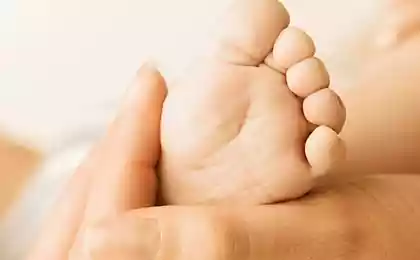1342
8 facts from the history of footwear
In the shops and online stores can now be found shoes at any age, gender, taste and color. Who comes up with what people will wear shoes? Who dictates what style to follow? We wear shoes every day and still know very little about its history. < Website 10 random results and unusual facts from the history of shoes.
1. "Classic" shoes or shoes defining your "class" in society? H2> In ancient Egypt, slaves or did not wear shoes at all, or wearing sandals made of palm leaves. Commoners wore sandals made of papyrus. And those who belonged to high society wore sandals with pointed toes. Red and yellow were allowed to wear only the noble people. It was possible to easily determine to which class belongs to a person just by looking at his shoes.
2. "Two feet, and both left» h2> Before 1818 there were no shoes to the right or left foot. Until that time, there were no differences between the shoes made for different legs. Obviously, before nobody seriously thought about comfort. The first pair of shoes, consisting of different left and right halves, was established in Philadelphia.
3. Wooden shoes h2> Wooden shoes or Clog, began their existence in the Netherlands. Most of the Netherlands is below sea level, so there are many wetland areas. The Dutch realized that leather shoes very quickly get wet and spoiled, so invented the wooden shoes. Until now wear these shoes - a tribute to tradition, although they never wear indoors. Wooden shoes always leave the threshold and enter the house in your socks.
4. Shoe Museum h2> The only museum of shoes in North America is located in Toronto. Museum collection includes about 4, 5 thousand years of history. Russia's largest museum of shoes is Kimry Museum of Local History in the Tver region, where the basis of the exhibition is a collection of footwear XVIII-XX centuries.
5. Some dangerous wear shoes h2> In the XVI century aristocrat began to wear shoes with very high heels. Heel was so high that the ladies could not walk without the help of servants. Thereafter, such poluhoduli-polutufli became popular in Venice. Prostitutes wore these shoes and heel height was so incredible that it had legally restricted, because she could be a serious blow and damage the health of a fall from such a height. But today, designers sometimes create such stunningly awful shoes, for example, Alexander McQueen has created a 10-inch (25 cm high) 'shoes, armadillos "in the collection Spring-Summer 2010, but the model Sasha Pivovarova, Natasha Poly and Lee Kershaw refused to participate in show, finding shoes are too dangerous and aggressive.
6. The law requires h2> For centuries monarchs determined what kind of shoes you can wear and what you can not. Of course, they are hiding under their quirks and reasonable reasons: for example, the famous English King Henry VIII introduced the fashion of shoes "duck bill" - flat shoes with short socks and a wide incision on the side. He issued a law that such footwear was worn all know, because he wanted to hide his legs, suffering from gout.
7. Wedding Shoes h2> generally associated with the wedding a lot of traditions, some of which relate to shoes. For example, in Hungary the groom drank to the health of the bride from her wedding shoes. And in China, one of the shoes of the bride (and they should be red) thrown from the roof, and it brings the newlyweds good luck in their marriage. Known traditional Russian divination: the girl threw shoe at midnight from 18 to 19 of January. Depending on which way the sock slipper indicate, there will come a worthy bride.
8. Selling shoes online h2> Experts J'son & Partners Consulting, the market e-commerce Russia in 2014 amounted to 683 billion rubles. Average market growth (CAGR) in 2009-2014. 42 was equal to 5%. In the years 2014-2018 CAGR is expected to reach 7% per year. Experts expect a slight recovery after a severe macroeconomic situation in 2015 to 2016 and market growth of more than 20% by 2017. The most visited e-commerce segment in 2014 are "hypermarkets", "Fashion", "coupon services" and "Consumer Electronics". More and more people are buying different commodities online. online shoe store and clothing Quelle offers a wide range of products for people of all ages and interests, and is one of the leading online clothing market.


